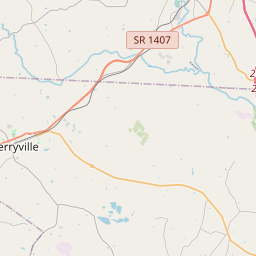Stonewall Jackson
Historical marker location:
Lowesville, North Carolina
( Marker is on Old Plank Road, 0.2 miles east of Hines Circle Road, on the right when traveling west.)
Marker installed: 2004







© OpenStreetMap contributors
More history nearby
The state's largest city, Charlotte, was named after Queen Charlotte of Mecklenburg-Strelitz, the wife of King George III of England.
About Lincoln County
Lincoln County Timeline
Lincoln County, located in the southwestern portion of North Carolina, has a rich and diverse history that spans centuries. The area was originally inhabited by various Native American tribes, including the Catawba, who were known for their agriculture and trading practices.
The first European settlers arrived in the late 1700s, establishing small farming communities and contributing to the development of the region. The county was officially formed in 1779 and named after Revolutionary War General Benjamin Lincoln. During this time, agriculture, particularly cotton production, became the main economic activity in the area, with numerous plantations dotting the landscape.
In the mid-1800s, Lincoln County experienced significant growth with the arrival of the railroad. The rail lines connected the county to larger markets and facilitated the transport of goods and resources, leading to the establishment of industries such as textiles and furniture manufacturing. This period of industrialization brought prosperity and population growth to the county.
During the Civil War, Lincoln County faced challenges, as it was located in a border state. The county was divided in its loyalties, experiencing conflicts between Confederate and Union sympathizers. It also became a strategic location for military operations, witnessing several skirmishes and battles.
In the late 19th and early 20th centuries, Lincoln County continued to evolve, transitioning from an agrarian economy to a more diversified one. The county witnessed further growth in industries such as textiles, agriculture, and manufacturing. Today, Lincoln County remains a vibrant community with a mix of rural and urban areas, displaying its proud history through its various historical sites and landmarks.
The first European settlers arrived in the late 1700s, establishing small farming communities and contributing to the development of the region. The county was officially formed in 1779 and named after Revolutionary War General Benjamin Lincoln. During this time, agriculture, particularly cotton production, became the main economic activity in the area, with numerous plantations dotting the landscape.
In the mid-1800s, Lincoln County experienced significant growth with the arrival of the railroad. The rail lines connected the county to larger markets and facilitated the transport of goods and resources, leading to the establishment of industries such as textiles and furniture manufacturing. This period of industrialization brought prosperity and population growth to the county.
During the Civil War, Lincoln County faced challenges, as it was located in a border state. The county was divided in its loyalties, experiencing conflicts between Confederate and Union sympathizers. It also became a strategic location for military operations, witnessing several skirmishes and battles.
In the late 19th and early 20th centuries, Lincoln County continued to evolve, transitioning from an agrarian economy to a more diversified one. The county witnessed further growth in industries such as textiles, agriculture, and manufacturing. Today, Lincoln County remains a vibrant community with a mix of rural and urban areas, displaying its proud history through its various historical sites and landmarks.
Lincoln County Timeline
This timeline provides a condensed summary of the historical journey of Lincoln County, North Carolina.
- 1779 - Lincoln County is established in North Carolina.
- 1780 - Battle of Ramsour's Mill takes place during the American Revolutionary War.
- 1824 - The county seat is established in Lincolnton.
- 1865 - Confederate General Robert E. Lee surrenders, marking the end of the American Civil War.
- 1873 - The county's first railroad, the Carolina Central Railroad, is completed.
- 1921 - The B.A. Cline Store is built, which becomes a famous local landmark.
- 1962 - Lake Norman is created by the construction of the Cowans Ford Dam.
- 1987 - The Lincoln County Courthouse is destroyed by fire.